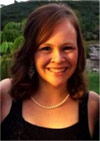10 Unique Facts about the Visual History Archive
In honor of National Archives Month, here are 10 unique facts about USC Shoah Foundation’s Visual History Archive.
- The Visual History Archive includes testimony from survivors and witnesses to the Holocaust, 1994 Rwandan Tutsi Genocide and the 1937 Nanjing Massacre. Testimonies from the Armenian Genocide will be added in April 2015 in conjunction with its 100 anniversary.
- There are 109,687 hours of video testimony in the Visual History Archive, and it would take nearly 13 years to watch all those hours of content. That is, without any breaks, 24 hours a day, 7 days week. Or to put it another way, if watching testimony was a fulltime job, you would have to work for more than 50 years to see it all.
- There are 62,000 keywords and 1.3 million names mentioned in the Visual History Archive.
- Sign language is one of the 39 languages in the Visual History Archive. There are five testimonies in sign language, four of which have English interpreters and one testimony with a Hungarian interpreter.
- Yukiko Sugihara gave the only Japanese testimony in the Visual History Archive. She and her husband, diplomat Chiune Sugihara, saved an estimated 5,000-10,000 people by issuing visas that allowed Jews to escape through Japan.
- The longest interview in the Visual History Archive is of Jewish survivor Mosheh Beyski. His testimony is 16 hours and 17 minutes long.
- More than 2,100 people sing or perform music in their testimonies. The indexing term to find these testimonies is “musical recital.”
- The Visual History Archive includes testimonies of former members of Congress, musicians, actors, Nobel laureates, scholars, writers and artists. Watch the testimonies of Simon Wiesenthal, Victor Borge, Robert Clary, Alice Sommer, Roméo Dallaire, Tom Lantos and many others in the Visual History Archive.
- The entire Visual History Archive (nearly 52,000 catalogued and indexed testimonies) is available at 50 different access sites, including universities and museums worldwide. Find an access site near you http://sfi.usc.edu/locator
- The Visual History Archive Online allows registered users to watch and search about 1,200 English-language testimony videos from survivors and witnesses of the Holocaust, 1994 Rwandan Tutsi genocide and the 1937-38 Nanjing Massacre.
Bonus Fact: The Visual History Archive online is accessible on the IPhone. Connect with testimony on the go!
